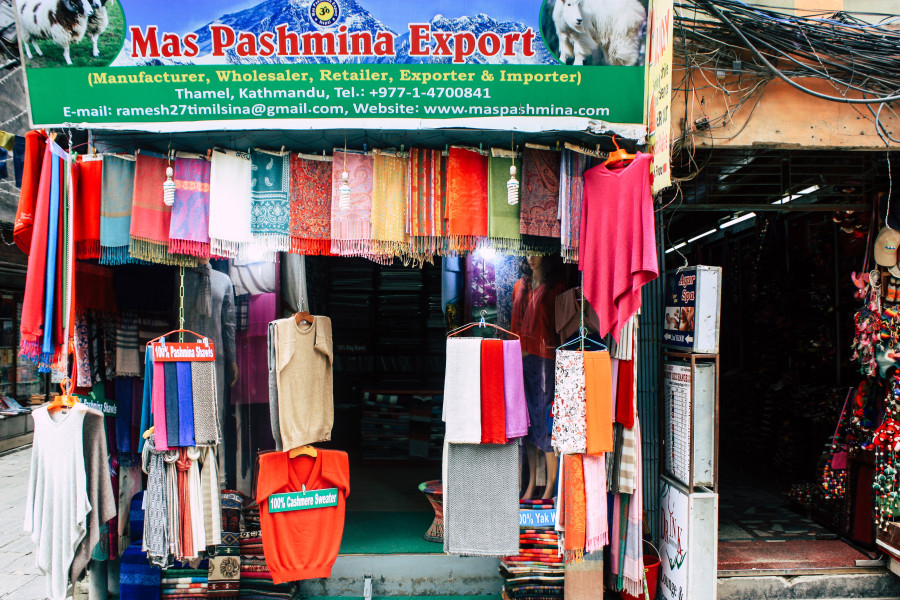Money
Pashmina exports in the first quarter down 27 percent
Shipments during the period mid-July to mid-October totalled Rs567 million.
Krishana Prasain
According to the data of the Trade and Export Promotion Centre and the Department of Customs, shipments during the period mid-July to mid-October were valued at Rs567 million. During the same three-month period in the last fiscal year, Rs787 million worth of products
made of the fine wool were exported.
Durga Bikram Thapa, president of the Nepal Pashmina Industries Association, said pashmina exports declined as orders from European buyers slowed down. He attributed the drop to issues in the local economy.
Demand for pashmina shawls and scarves has shrunk, but traders are getting more orders for pashmina sweaters, Thapa said. Europe is a major market for Nepali pashmina.
Bijaya Ratna Tuladhar of Yak and Yeti Enterprises said that the quality and designs of Nepali pashmina had not improved in recent years. “The government has branded Nepali pashmina as Chyangra Pashmina, but the product has not been able to perform well in the international market despite high potential demand,” he said.
Tuladhar added that the use of low quality raw materials had led to a decline in the quality of Nepali pashmina. “There is no quality check system in the import of raw materials for pashmina which has resulted in decreased quality,” he said. The raw materials are imported from China and New Zealand.
Surendra Bhai Shakya, president of the Federation of Handicraft Associations of Nepal, said that Nepal-made pashmina had a hard time competing with cheaper products in the international market.
Nepal exported pashmina worth Rs216.9 million in the previous fiscal year. In the last fiscal year, shipments plunged by 15 percent to Rs185.1 million. High production costs, inability to compete with neighbouring countries and less economic support are the reasons for the annual decline in pashmina exports, traders said.
“In the last two years, the government has not conducted any plans or programmes to promote pashmina in the international market,” said Tuladhar. A flimsy marketing strategy and weak support from the government in promoting pashmina has led to a sharp decline in shipments this year, he said.
According to Thapa, there are 300-350 pashmina traders in the country.
Dharma Raj Shakya, former president of the Federation of Handicraft Associations of Nepal, said that the government provides a 5 percent cash incentive under the Nepal Trade Integration Strategy, but getting the money is a massive bureaucratic hassle.
Moreover, the 5 percent cash incentive is much less than what neighbouring countries give to their traders, and this has discouraged us, he said. “We are demanding a 10 percent cash incentive and an easier process of getting the money,” he said. “The government always talks about increasing exports, but it is only words. Nothing concrete has been done.”
Shakya said that finding skilled manpower was another challenge. “An increasing number of trained workers are opting for foreign employment, and this has made it very difficult for us to get competent people,” he said.
Nepal exported pashmina products valued at Rs921 million in the first quarter of 2015-16. The figure dropped to Rs768 million in the same period of 2016-17, a decline of 16 percent. Shipments inched up to Rs787 million in the first quarter of the fiscal year 2018-19.




 6.31°C Kathmandu
6.31°C Kathmandu















